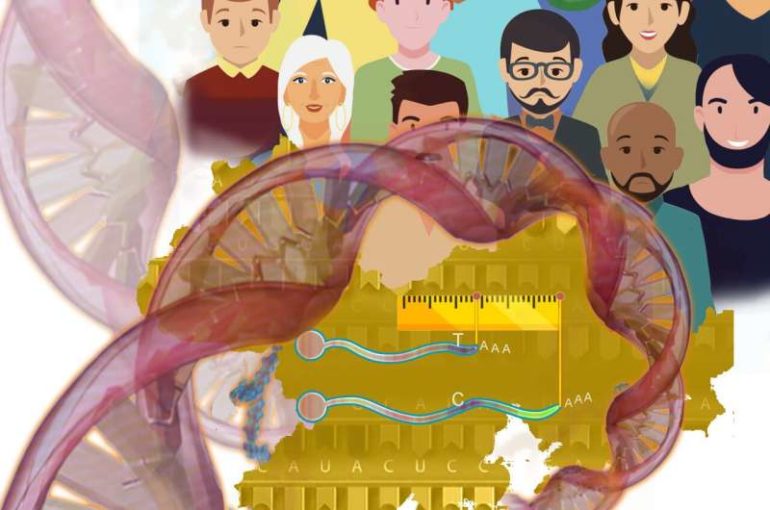A new study analyzing the association between an individual’s genetics (genotype) and their observable characteristics resulting from the interaction of genetics and the environment (phenotype), contributes new knowledge to the understanding of human complex traits and diseases.
The study titled, “An atlas of alternative polyadenylation quantitative trait loci (3′aQTLs) contributing to complex trait and disease heritability,” was recently published in Nature Genetics. Led by University of California, Irvine professor of bioinformatics Wei Li, PhD, the Grace B. Bell chair of the Department of Biological Chemistry at UCI’s School of Medicine, this new research unlocks how much differences in people’s genes account for differences in their traits and what can be attributed to the effects of the surrounding environment.
“Our research is of particularly importance as it offers interpretations that explain how natural variations can shape human phenotypic diversity and tissue-specific diseases,” said Li. “Our most exciting finding was that certain events in human genes can explain a substantial proportion of trait heritability.”
It was well known that 3′-UTR alternative polyadenylation (APA) occurs in approximately 70 percent of human genes and substantively impacts cellular processes such as proliferation, differentiation and tumorigenesis. But, until now, the association of APA events with disease risk and complex human traits was not well understood.
Genome-wide association studies have identified thousands of noncoding variants associated with human traits and diseases. However, the functional interpretation of these variants has proven to be a major challenge. In this study, researchers constructed a multi-tissue atlas of human 3? UTR alternative polyadenylation (APA) quantitative trait loci (3′aQTLs), containing approximately 0.4 million common genetic variants associated with the APA of target genes, identified in 46 tissues isolated from 467 individuals (Genotype-Tissue Expression Project).
“From our findings we could show that specific molecular features associated with human phenotypic variations contribute substantially to the molecular mechanisms underlying human complex traits and diseases,” explained Li.
The research team is continuing to study these molecular mechanisms to test the novel 3′aQTLs genes for diabetes, prostate cancer, Alzheimer’s Disease and Amyotrophic lateral sclerosis (ALS).
Researchers identify RNA editing events that impact gene expression and phenotype
More information:
Lei Li et al, An atlas of alternative polyadenylation quantitative trait loci contributing to complex trait and disease heritability, Nature Genetics (2021). DOI: 10.1038/s41588-021-00864-5
Provided by
University of California, Irvine
Citation:
Study sheds light on mysterious genotype-phenotype associations (2021, June 1)
retrieved 1 June 2021
from https://medicalxpress.com/news/2021-06-mysterious-genotype-phenotype-associations.html
This document is subject to copyright. Apart from any fair dealing for the purpose of private study or research, no
part may be reproduced without the written permission. The content is provided for information purposes only.
